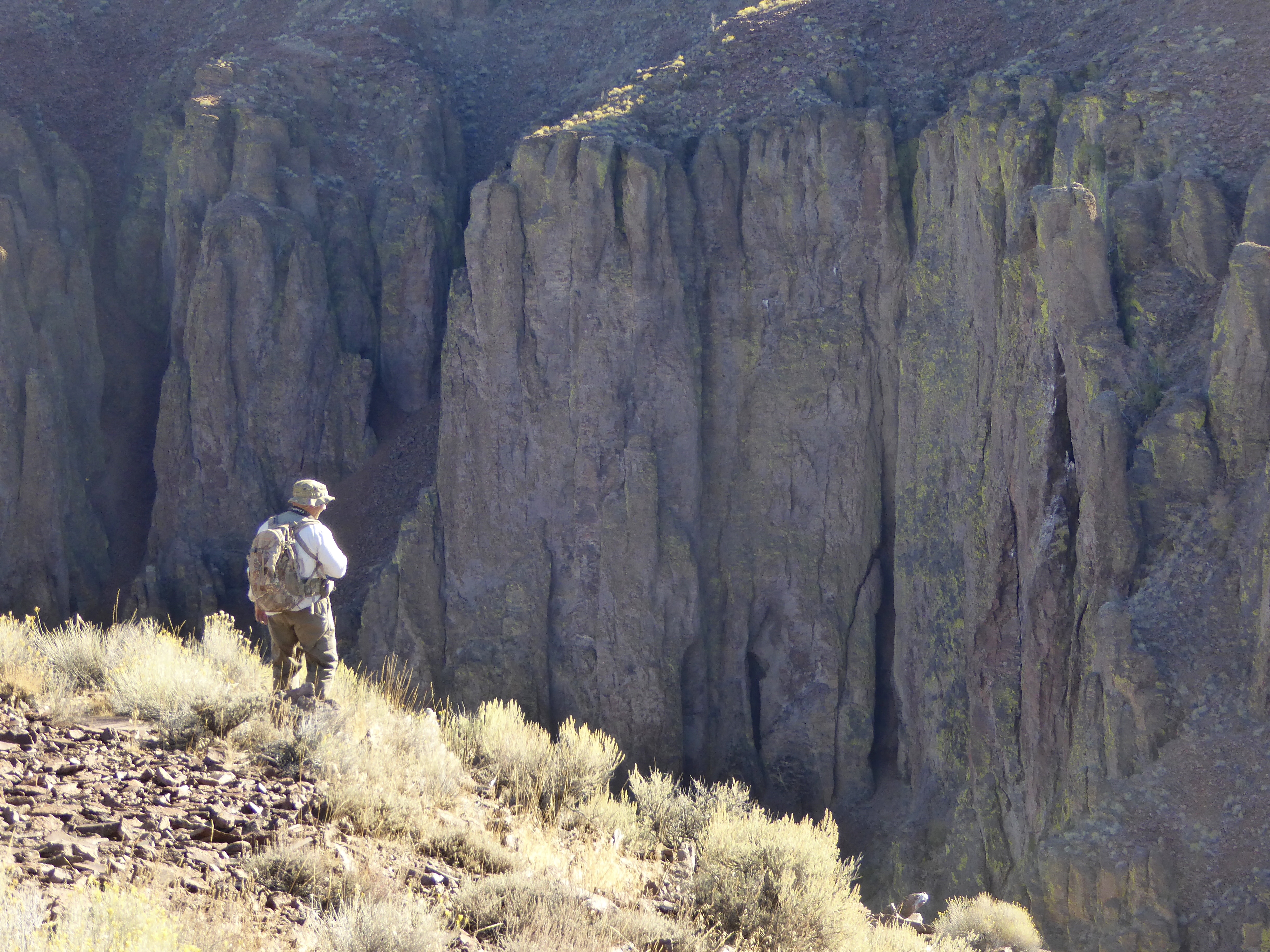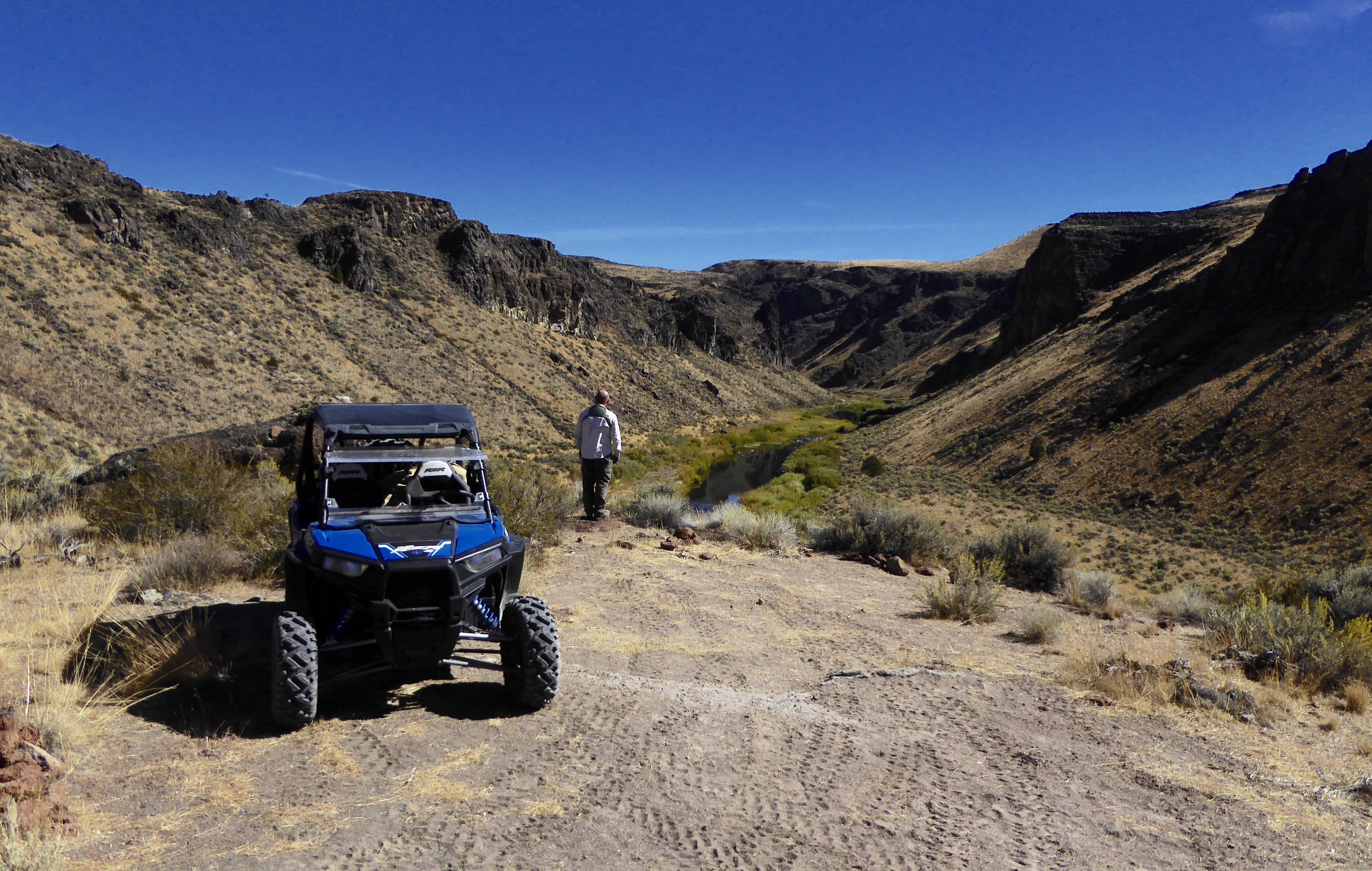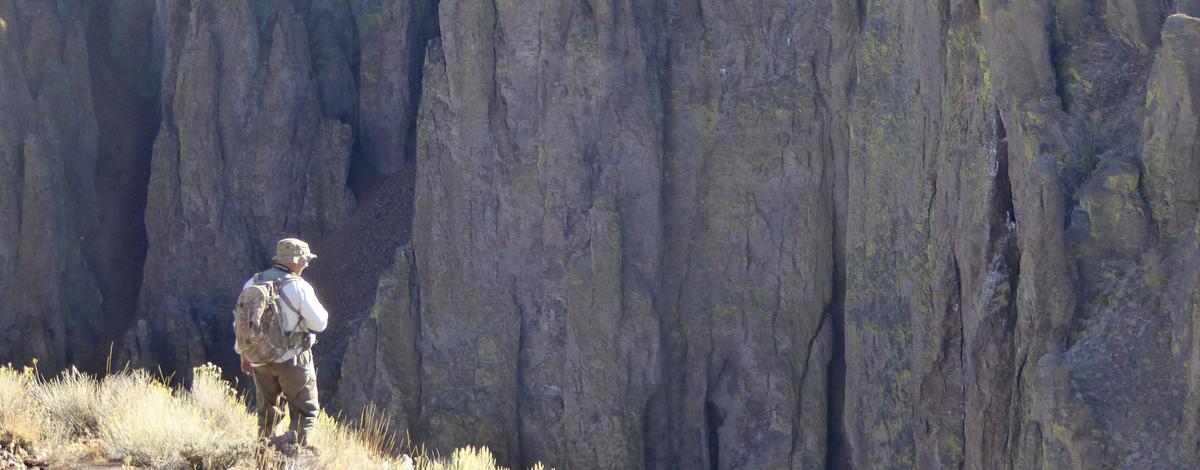The Owyhee Desert is a sportsman’s paradise and a test of your backcountry skills. It covers about 9 million acres in Idaho, Nevada and Oregon, and it’s among the most remote and unpopulated areas in the Lower 48 states. According the Bureau of Land Management, it includes 517,000 acres of designated wilderness and 325 miles of Wild and Scenic rivers.

It’s also part of Idaho Fish and Game Conservation Officer Brian Perkes’ patrol area, which presents some interesting challenges. If he covered 100 miles a day, it would take him 25 days to patrol all of his area, and much of it is in the Owyhees. Perkes is one of a handful of Fish and Game officers who patrol this lonely corner of Southwest Idaho.
He recently assisted fellow Conservation Officer Brian Marek investigating a suspicious elk kill near the Oregon border where the elk was shot and butchered within 50 yards of a main road. The following day, he was investigating another elk killed near the Nevada border. That was in addition to a three-day backcountry patrol deep in the most remote and inaccessible parts of the Owyhees.

The Owyhee Desert is a challenge for enforcement, but make no mistake, Fish and Game conservation officers are out there. They have access to the same modes of transportation as hunters and other recreationists, and they’re keeping an eye on the area. The message is simple: Even if you’re in the middle of nowhere, don’t assume no one is watching.
About a year on the job, Perkes is learning the vast landscape and how to navigate it, and he passes that knowledge on to hunters who are fortunate enough to draw a coveted big-game tag there, or who venture out to hunt upland birds. Perkes said he’s not out there just for enforcement, he’s also a resource for hunters.
“I’m not just driving around and looking for people doing things wrong, I want to see people enjoy the opportunities,” he said.
He’s also available to lend a hand when needed. He recently helped a hunter whose vehicle broke down get out of the desert and contact his family. Perkes has an array of communication equipment that lets him keep in touch with his fellow officers, even when he’s far off the grid.
Desert, but not deserted
While the Owyhee Desert may appear desolate, it’s rich in wildlife, and it’s popular with hunters. It’s home to big-game game animals as deer, elk, antelope, mountain lion, bighorn sheep. With the exception of a two-point only deer season and general mountain lion hunts, most big-game hunting is regulated by controlled hunts that are drawn in the spring. Here’s information on controlled hunt applications.

Upland bird hunting is also popular in the Owyhees, particularly for chukar, Hungarian (gray) partridge, sage grouse and California quail, as well as some forest grouse at upper elevations. Small-game hunters can also find cottontail rabbits.
Fishing opportunities are limited, but there are reservoirs in the Owyhee Desert stocked with rainbow and cutthroat trout, and some year-round streams have native redband rainbow trout.
There are many opportunities for wildlife watching. You can see herds of pronghorn antelope grazing in the grasslands, a golden eagle soaring on the thermals, chukars chuckling from a rocky point, or a desert bighorn tiptoeing across sheer canyon walls.
It’s common to see wildlife along one of several maintained and marked routes, such as the Owyhee Scenic Byway, a 103-mile gravel road that bisects a large portion off the Owyhees between and Grand View and Jordan Valley, Ore. For information about the byway, including maps and descriptions, visit the Bureau of Land Management’s website.
Spring and fall are typically the most popular times to visit the Owyhees, which despite being a desert, includes numerous mountains that top out between 6,000 and 8,400 feet, which makes for some diverse habitat and weather.
Untamed nature
The Owyhee Desert’s rivers and mountains are famous, or notorious, for their ruggedness and inaccessibility. The remoteness of the area must be seen to be appreciated. It’s common to have horizon-to-horizon views with nothing manmade visible on the landscape.
It’s also common to travel vast distances across seemingly flat ground and have the plains fall into an impassable canyon with a ribbon of stream or river flowing in the bottom.
Perkes knows the challenges of traversing the vast open spaces interrupted by deep river canyons and steep mountains.
“Even though it might be only 10 miles away, it could take 10 hours to get there,” he said.

Why bother?
With such hurdles, why do people go there? The rugged, remote nature of the Owyhee Desert and the abundance of wildlife is a magnet for many adventurers. Throw in some spectacular scenery, natural history, and the chance to truly get out and explore, and the Owyhees are a unique opportunity that’s within an hour’s drive of some of Idaho’s most populated areas.
Be prepared and take precautions
The Owyhee Desert is largely undeveloped. There are few developed recreation areas, such as campgrounds, or water sources. Most roads are dirt or gravel and few are maintained year round. Many roads are unmarked, and there are large parcels of private land with roads that can be restricted by landowners.
Be cautious on all roads because many are sporadically maintained and poorly marked. If the route looks rough, especially descending into canyons or crossing streams, don’t assume the road gets better on the other side.
It’s critical for anyone venturing into the area have a vehicle capable of withstanding extremely rough terrain. High-ground clearance, four-wheel drives with sturdy tires are recommended, and vehicles should have at least one full-sized spare tire.
Snowstorms at high-elevations are common in the fall, but it’s usually easy to avoid them by staying at lower elevations. However, don’t get a false sense of security. A rainstorm can also turn roads into a muddy, sloppy mess that can make traveling by any means difficult.
There are no stores, gas stations or services except in perimeter areas, such as Marsing, Walters Ferry, Bruneau and Grand View in Idaho, Jordan Valley, Oregon, and Owyhee, Nevada. Cell service is very limited or nonexistent in most of the Owyhees.

